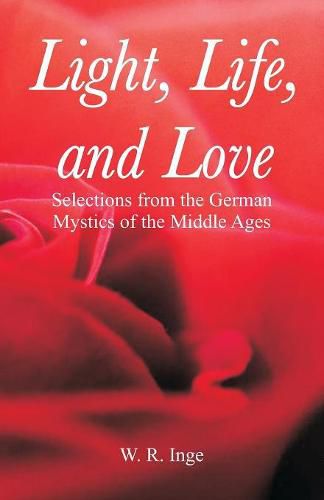Readings Newsletter
Become a Readings Member to make your shopping experience even easier.
Sign in or sign up for free!
You’re not far away from qualifying for FREE standard shipping within Australia
You’ve qualified for FREE standard shipping within Australia
The cart is loading…






This title is printed to order. This book may have been self-published. If so, we cannot guarantee the quality of the content. In the main most books will have gone through the editing process however some may not. We therefore suggest that you be aware of this before ordering this book. If in doubt check either the author or publisher’s details as we are unable to accept any returns unless they are faulty. Please contact us if you have any questions.
TO most English readers the Imitation of Christ is the representative of mediaeval German mysticism. In reality, however, this beautiful little treatise belongs to a period when that movement had nearly spent itself. Thomas a Kempis, as Dr. Bigg has said, [1] was only a semi-mystic. He tones down the most characteristic doctrines of Eckhart, who is the great original thinker of the German mystical school, and seems in some ways to revert to an earlier type of devotional literature. The Imitation may perhaps be described as an idealised picture of monastic piety, drawn at a time when the life of the cloister no longer filled a place of unchallenged usefulness in the social order of Europe. To find German mysticism at its strongest we must go back a full hundred years, and to understand its growth we must retrace our steps as far as the great awakening of the thirteenth centur
$9.00 standard shipping within Australia
FREE standard shipping within Australia for orders over $100.00
Express & International shipping calculated at checkout
This title is printed to order. This book may have been self-published. If so, we cannot guarantee the quality of the content. In the main most books will have gone through the editing process however some may not. We therefore suggest that you be aware of this before ordering this book. If in doubt check either the author or publisher’s details as we are unable to accept any returns unless they are faulty. Please contact us if you have any questions.
TO most English readers the Imitation of Christ is the representative of mediaeval German mysticism. In reality, however, this beautiful little treatise belongs to a period when that movement had nearly spent itself. Thomas a Kempis, as Dr. Bigg has said, [1] was only a semi-mystic. He tones down the most characteristic doctrines of Eckhart, who is the great original thinker of the German mystical school, and seems in some ways to revert to an earlier type of devotional literature. The Imitation may perhaps be described as an idealised picture of monastic piety, drawn at a time when the life of the cloister no longer filled a place of unchallenged usefulness in the social order of Europe. To find German mysticism at its strongest we must go back a full hundred years, and to understand its growth we must retrace our steps as far as the great awakening of the thirteenth centur